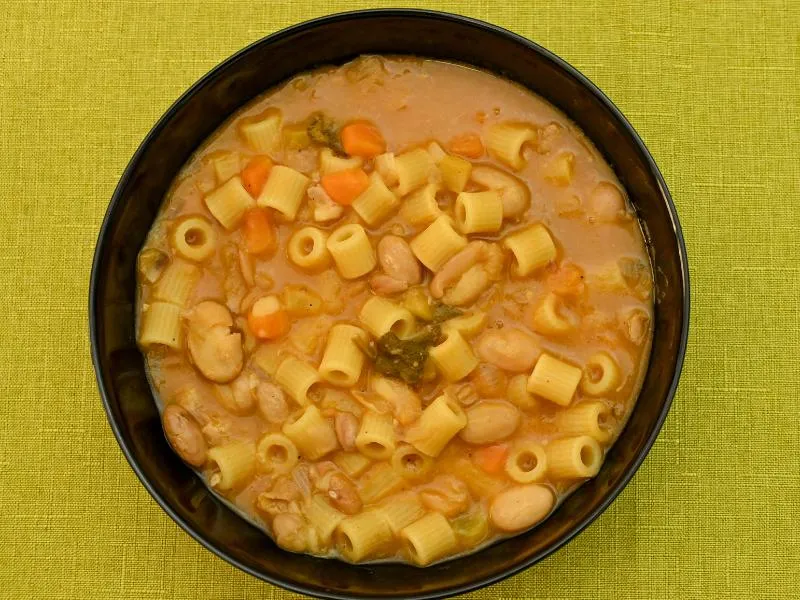Pasta e Fagioli
A rustic, hearty soup combining pasta, beans, vegetables, and herbs in a savory broth.
👉 View Authentic Recipe 👈
About This Dish
Pasta e Fagioli (literally “pasta and beans”) is a cornerstone of Italian cucina povera (peasant cooking), with roots dating back centuries when beans provided essential protein for those who couldn’t afford meat. While found throughout Italy, distinctive regional variations emerge in Tuscany, where cannellini beans dominate, and Veneto, where borlotti beans are traditional and the soup is often thicker.
The dish embodies the Italian philosophy of transforming humble ingredients into extraordinary meals. Traditional versions begin with a soffritto (diced onions, carrots, and celery sautéed in olive oil), followed by beans, broth, and small pasta shapes like ditalini or tubetti. In some northern regions, a small amount of pancetta or prosciutto rind provides depth, while southern versions might incorporate tomatoes for acidity.
Pasta e Fagioli exemplifies the seasonal adaptability central to Italian cuisine, with ingredients varying based on availability. Historically served as a complete one-pot meal, especially during colder months, it demonstrates how Italians elevate simple ingredients through technique and patience—allowing flavors to develop slowly and using Parmigiano-Reggiano rinds to enrich the broth.
🧑🍳 Analyzed by CucinaBot
Why This Dish Works
Pasta e Fagioli achieves remarkable depth through the combination of starch from both beans and pasta, creating a naturally creamy texture without added dairy. The gradual cooking process allows beans to release their starches while absorbing surrounding flavors. Meanwhile, the aromatic base of soffritto provides foundational flavor compounds that permeate both the broth and solid ingredients, creating a unified taste experience with surprising complexity from few ingredients.
Key Success Factors
- Proper Bean Cooking: Beans must be cooked until tender but still maintaining structural integrity—neither too firm nor mushy
- Pasta Selection: Small shapes that cook in 8-10 minutes work best, allowing them to finish cooking in the broth without becoming overcooked
- Broth Consistency: The final texture should be between soup and stew, with enough liquid to keep the pasta from absorbing it all
- Incremental Seasoning: Salt should be added gradually throughout cooking, not all at once, to properly develop flavors
Common Pitfalls
Many non-authentic versions overload the dish with too many ingredients, particularly excessive meat, which transforms it from a bean-focused dish to a meat soup with beans. Another common mistake is cooking the pasta separately and adding it at the end—the pasta should cook directly in the broth to properly absorb flavors and release its starch, which is crucial for the authentic texture.
How to Judge Authenticity
When reviewing recipes, look for these markers of authenticity:
- Simplicity in ingredients with focus on beans and pasta, not meat
- Pasta cooked directly in the broth, not separately
- Use of aromatic vegetables (soffritto) as the flavor foundation
- Minimal herbs (typically only rosemary, bay leaf, or parsley)
- Finishing with high-quality olive oil and freshly grated cheese